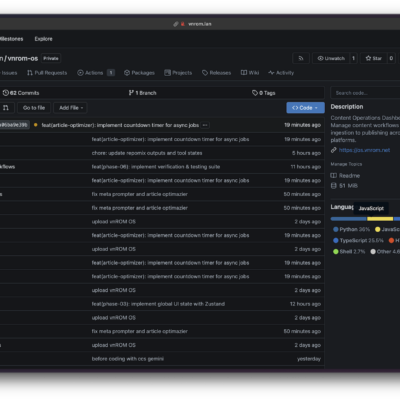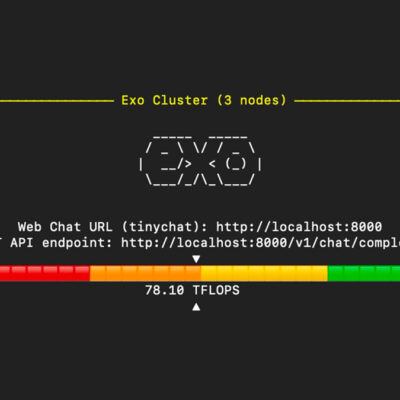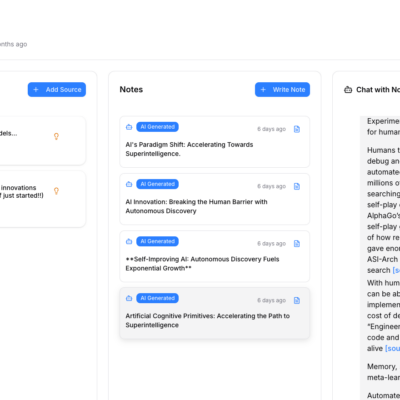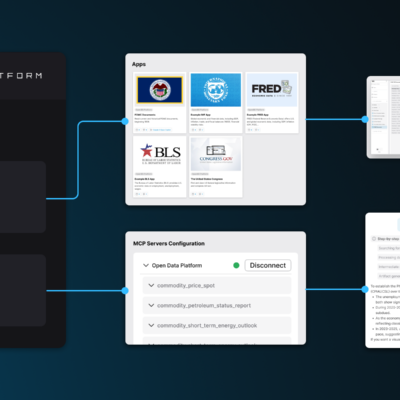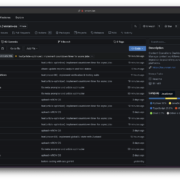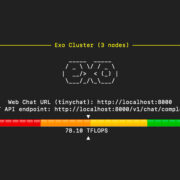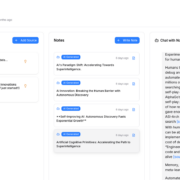Arcane is an open-source, self-hosted Docker management platform designed for simplicity and performance. Loved by the self-hosted and DevOps community, Arcane offers a clean, intuitive interface to manage all your containers, images, volumes, and networks — making Docker accessible for beginners and power users alike.
With more than 1.6k GitHub stars, Arcane is rapidly emerging as a strong alternative to Portainer, Dockge, and other container GUIs. In this post, you’ll learn all about Arcane’s features, benefits, how to install it, and why it’s a standout choice for managing your home lab or production Docker environments.
Key Features of Arcane
- Container Management
- Real-time dashboard of all running, stopped, and unhealthy containers
- Start, stop, restart, inspect, and view logs in one click
- View resource usage: CPU, RAM, Network and disk in real-time
- Edit environment variables, ports, and volumes easily
- Image Management
- Browse, pull, and prune Docker images
- See image details and maturity for safer deployments
- Networks & Volumes
- Easily create and manage Docker networks and volumes
- Mount and organize volumes through the UI
- Docker Compose Projects
- Upload or edit
docker-compose.ymlfiles and deploy entire stacks - Manage compose projects directly without CLI
- Mobile-responsive & Dark Mode
- Clean, modern design with dark/light toggle
- Fast SvelteKit+Go backend, optimized for performance
- Multi-language Support
- Translate via Crowdin
- Switch UI languages on the fly
Why Choose Arcane for Docker Management?
- User-Friendly: Designed for everyone, from homelab enthusiasts to sysadmins. No more intimidating CLI commands!
- Self-Host & Secure: Run Arcane on your own server and keep full data control. BSD-3 Licensed.
- Smooth Updates: Update to the latest version with a simple
docker compose pull& restart. - Community Driven: Actively developed, with helpful GitHub and Reddit support threads.
How to Install Arcane (Step by Step)
These instructions cover Ubuntu 24.04+, but Arcane works on any Docker-enabled OS.
1. Prerequisites
- Docker Engine & Docker Compose plugin
- 2GB+ RAM recommended
- Open TCP port 3000 (default)
2. Create Arcane Directory and Compose File
mkdir -p ~/arcane && cd ~/arcaneCreate compose.yml:
version: '3.9'
services:
arcane:
image: ghcr.io/ofkm/arcane:latest
container_name: arcane
ports:
- '3000:3000'
volumes:
- /var/run/docker.sock:/var/run/docker.sock
- ./arcane-data:/app/data
environment:
- APP_ENV=production
- PUBLIC_SESSION_SECRET=yourRandomGeneratedSecret # Recommend: openssl rand -base64 32
restart: unless-stopped3. Start Arcane
docker compose up -d- Arcane will now be running on http://your-server-ip:3000/
Default login:
- Username:
arcane - Password:
arcane-admin(change immediately after first login!)
Using Arcane: Quick Start Guide
- Log in at
http://your-server-ip:3000/
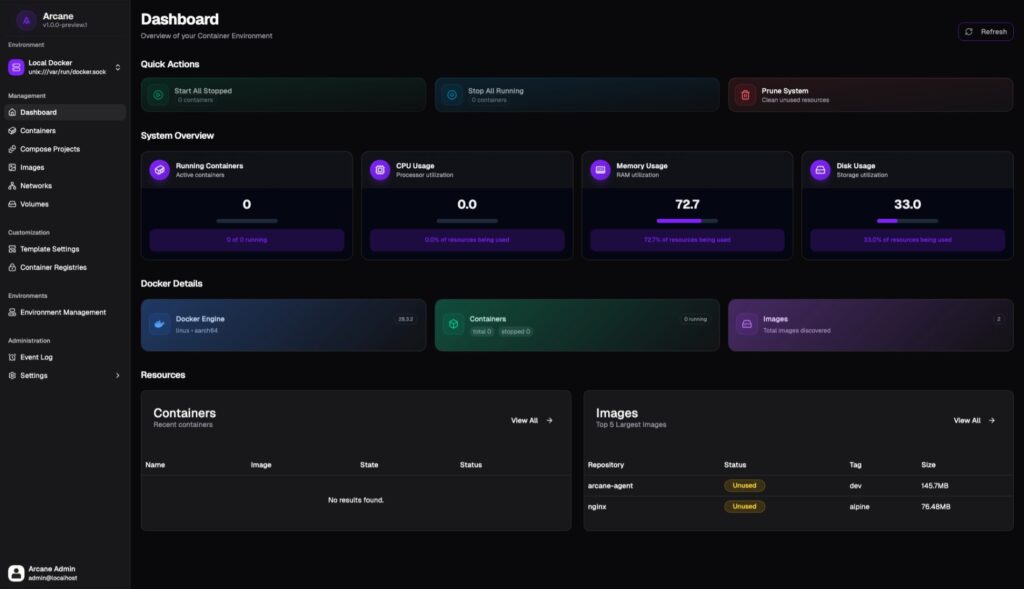
- View all containers. Use Start/Stop/Restart as needed.
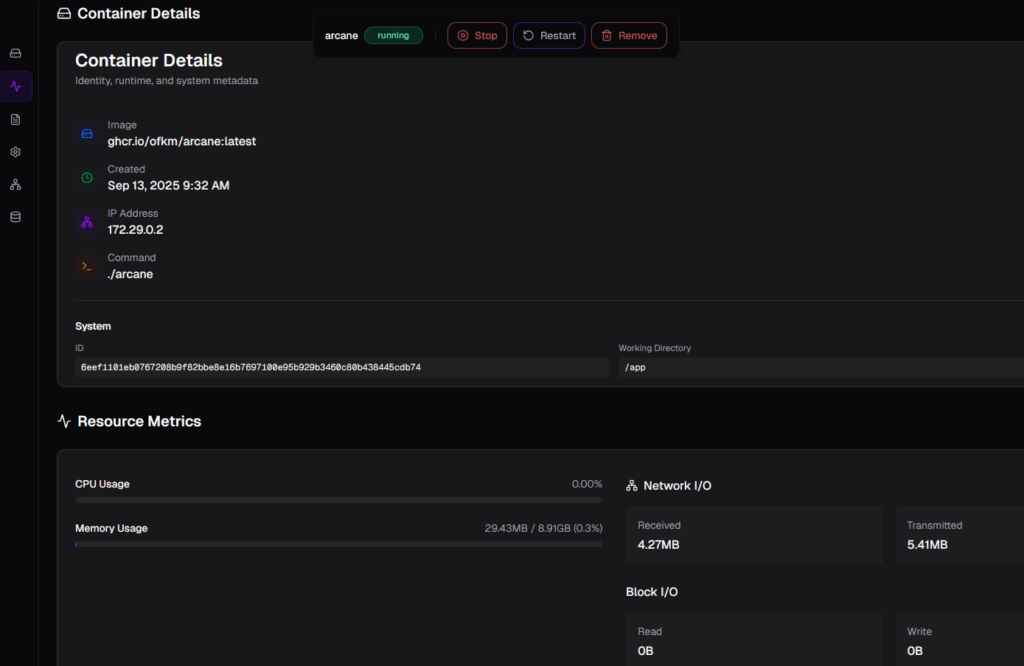
- Pull new images or delete unused ones from the Images tab.
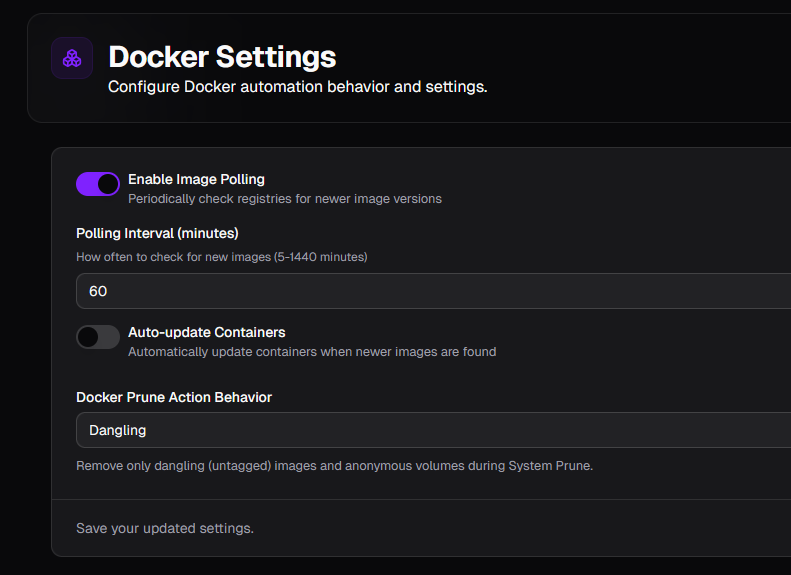
- Manage volumes/networks in their respective menus.
- Deploy or update docker-compose stacks in the Projects section.
- Customize UI, enable Dark Mode, or change language from Settings.
Tips & Troubleshooting
- Permission Issues: Ensure
/var/run/docker.sockis mounted, and your Arcane user is in thedockergroup. - Update Arcane:
docker compose pull
docker compose up -d- Backup the Arcane data directory (
./arcane-data) to save settings and projects.
Arcane vs Portainer vs Dockge
| Feature | Arcane | Portainer | Dockge |
|---|---|---|---|
| Open Source | ☑️ | ☑️ | ☑️ |
| Self-Hosted | ☑️ | ☑️ | ☑️ |
| Compose Project Support | ☑️ (UI) | ☑️ (UI) | ☑️ (stack only) |
| Real-time Resource Stats | ☑️ | ☑️ | X |
| Modern UI (SvelteKit) | ☑️ | X | X |
| Multi-language | ☑️ | Limited | X |
Final Thoughts
Arcane is the perfect solution for anyone seeking a minimalist, open-source, and powerful Docker dashboard. Whether you’re a self-hosting hobbyist or a professional DevOps engineer, Arcane streamlines your workflow and puts you in full control of your containers.

